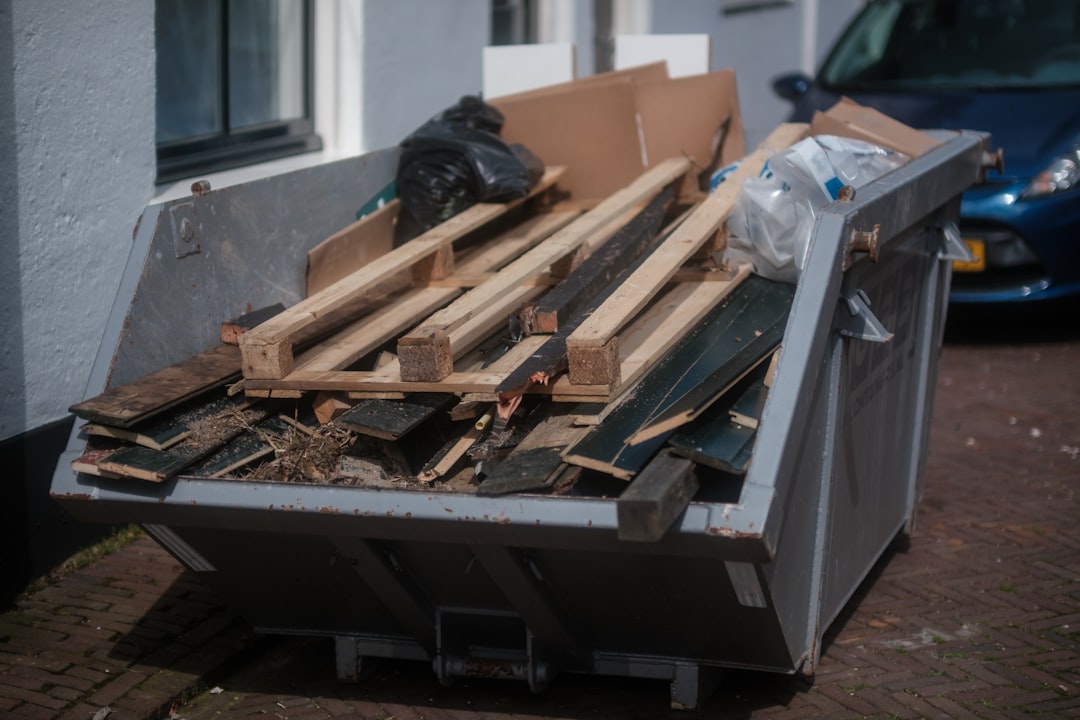

Engage prospects with a scan and streamline customer engagement with FREE QR code marketing tools by Sona – no strings attached!
Create a Free QR CodeFree consultation

No commitment

Engage prospects with a scan and streamline customer engagement with FREE QR code marketing tools by Sona – no strings attached!
Create a Free QR CodeFree consultation

No commitment
QR codes have evolved from a novelty to a strategic powerhouse in bridging offline engagement with online action. For furniture removal services, QR codes present a way to streamline customer inquiries, accelerate bookings, and increase conversions with minimal friction, addressing longstanding industry frustrations about missed leads and inefficient follow-up.
Traditionally, furniture removal service providers have grappled with outdated workflows, such as paper-based estimates, business card drop boxes, and printed service brochures, which often fail to capture and act on high-value opportunities. With better QR code adoption, every flyer or moving truck transforms into a measurable conversion point, closing the gap where prospects might otherwise slip through unnoticed or untracked.
This article explores how QR codes solve persistent pain points for furniture removal services: capturing high-intent leads before they move on, revealing valuable insights about campaign impact, and connecting offline touchpoints such as packaging, vehicle signage, or estimate forms directly to your digital marketing stack. These strategies allow proactive follow-up and more timely engagement, helping companies compete in a crowded marketplace.

Furniture removal providers often struggle with missing out on promising prospects who express interest offline but never make it into digital pipelines. QR codes bridge the gap between physical touchpoints and digital outcomes, helping you capture and nurture leads that might otherwise fall through the cracks. They also simplify critical steps such as quote requests, scheduling, and payment by connecting people to the right digital action in one scan.
Modern teams can replace analog bottlenecks without introducing complexity. Paper forms can become mobile-friendly quote flows, business cards can become one-tap contacts, and printed brochures can route to dynamically updated service pages. With the right platform to generate, track, and optimize codes, you turn every surface into a conversion path and every scan into a data point that improves follow-up and ROI.
Step-by-step:
Rather than relying on passive brochures, forward-thinking companies connect QR codes to calculators, scheduling tools, and pre-filled forms that reduce effort for customers. When each code feeds data into your analytics and CRM, the team gains visibility into which assets are working, where to double down, and how to deliver faster responses that win more jobs.

Furniture removal companies have historically battled limited visibility into how and where prospects first engage, which often results in lost leads or delayed outreach. People spot a truck, see a flyer, or receive a postcard, then forget to type in the URL later. The difficulty of guiding offline interest to timely online action makes it hard to prioritize high-intent prospects or determine which ads and placements truly work.
QR codes close these gaps by making next steps immediate. One scan can route someone to a booking page, a quick quote form, or a callback request without any typing or app downloads. This immediacy is critical in a competitive market where slow responses or clunky onboarding often hand the deal to another mover. Dynamic QR codes extend the value even further because you can change destinations post-print and test offers without reprinting materials. Industry experts highlight how marketing with QR codes can drive engagement and track results.
QR codes address these pain points in several ways:
Consider common furniture removal materials such as appointment cards, printed estimates, and move-day checklists. Each item can carry a QR code that shortens the time between interest and action, whether the goal is booking, reviewing, or learning about eco-friendly disposal. Over time, the data from these scans transforms how you plan routes, allocate budget, and tailor offers to different neighborhoods or customer segments.
Furniture removal firms often juggle multiple goals at once: capture more quote requests, standardize communication, and collect more reviews. The right QR format can make each of these easier while keeping deployment simple across your print assets and vehicle signage.
Choosing between static and dynamic matters. Static QR codes are best for evergreen resources like a general moving guide PDF. Dynamic QR codes are ideal when you need tracking, frequent updates, or A/B testing of offers. With platforms like Sona QR, you can generate any of these formats and manage them centrally, including toggling destinations without reprinting. Start creating QR codes for free.

A recurring obstacle in furniture removal is intercepting prospects before they start shopping multiple vendors. Smart QR placement turns familiar assets into acquisition engines and makes attribution straightforward.
Place QR codes where intent is high and attention is focused:
These placements transform daily operations into measurable marketing. You will quickly learn which neighborhoods convert best, which stores refer the most volume, and which messages work on trucks versus door hangers. Over time, you can shift budget and route planning toward proven sources of demand.

Missed or delayed lead capture and weak follow-up are persistent pain points in this industry. QR codes embedded in process-critical moments surface high-intent signals and speed up response times.
Sample use cases include:
Each use case simplifies the client journey while funneling behavioral data back to your CRM and analytics tools. With a clear mapping from scan to follow-up action, you create more consistent experiences and more efficient pipeline generation.
Each QR scan is a strong intent signal that includes context such as where the person scanned, which asset they used, and what time of day they engaged. By deploying distinct QR codes across touchpoints, you can segment audiences automatically and route them into tailored follow-up plays that match their stage and motivation.
Start by assigning unique codes to key stages in the buyer journey:
Next, tag scan data by use case and channel. For example, differentiate scans from door hangers versus truck decals versus postcards, and record time and day to understand behavior patterns. Enrich scans with metadata such as ZIP code or partner store ID to see which micro-locations generate higher-value jobs or larger item counts.
Integrate these segments into your CRM and ad platforms. With Sona QR and Sona, an AI-powered marketing platform that turns first-party data into revenue, you can sync scan events to HubSpot or Salesforce to trigger personalized email or SMS sequences, create lookalike audiences based on high-value scanners, and notify sales when a late-night quote scan indicates urgency. For a tactical framework, see Sona’s Playbook titled “Intent-Driven Retargeting: Driving High-Impact Campaigns with First-Party Intent Signals.” In furniture removal, useful distinctions include homeowners versus renters, donation drop-offs versus bulk haul-aways, and urgency such as same-day pickup requests. The result is precise retargeting that aligns offers and timing with real behavior, not guesswork.
QR codes are connectors that unify offline and online channels. For furniture removal services, they make every campaign measurable while giving customers a straightforward path to book or learn more. When codes appear consistently across your media, they create a cohesive experience that moves people from awareness to action with fewer steps. For broader tactics, explore qr codes in marketing.
Here are practical integrations tailored to this vertical:
QR codes serve as the offline onramp to your digital marketing engine. With a centralized platform such as Sona QR, you can manage all codes, monitor performance, and sync scan data with your CRM and ad accounts. This approach eliminates silos so that a scan from a truck wrap is treated with the same rigor as a click from a paid search ad.
When execution is piecemeal or lacks real-time feedback, missed opportunities proliferate. Use this checklist to ensure that each stage of your QR deployment addresses known gaps and uses analytics to guide improvements.
Determine what you want your QR campaign to accomplish and where it will live. In furniture removal, top goals include increasing instant quote requests, accelerating scheduling for bulky item pickups, capturing reviews at job completion, and educating customers about responsible disposal in their city or county. Align the use case with a clear business outcome such as lead volume, booking rate, or review count.
Choose between static and dynamic codes. Static codes are useful for unchanging destinations such as a general moving guide or a standard service overview. Dynamic codes let you edit destinations after printing and collect scan analytics, which is essential for ongoing optimization and attribution.
Design influences whether people notice, understand, and trust your QR codes. Use brand colors, a subtle logo in the code, and a clear frame that invites action. The call to action should explain the value and the result, not just ask to scan.
Roll out across the surfaces and locations that align with your growth plan. Trucks, yard signs, partner stores, and direct mail often deliver the highest intent in furniture removal. Sequence deployments so that you can learn from early placements before scaling system-wide.
Use a platform to monitor scan volume, conversion rate, and downstream outcomes. Attribution is the advantage of QR, so do not skip the measurement step. Review results weekly during the first months and adjust quickly.
Without clear connections between marketing activity and revenue, companies are left guessing which efforts move the needle. Furniture removal introduces additional complexity because several touchpoints can precede a booked job: someone scans a truck code, watches a disposal tips video, and then returns days later to complete a quote. A scan alone is not enough. You need to understand what happened next.
Advanced analytics solve this by linking scan events to downstream actions. With Sona QR, you can capture scan metadata such as time of scan, device type, and approximate location. When paired with Sona.com, that engagement can be merged with web analytics, form fills, email clicks, and CRM milestones to build a unified buyer journey. This helps you identify which physical assets and offers contribute most to pipeline and closed revenue. For a strategic overview, read Sona’s blog post “The Importance of Accurate Revenue Attribution.”
Use analytics to answer the most important questions:
By unifying scan data with CRM records, you can prove to stakeholders that truck wraps, door hangers, and event signage generate real revenue. This clarity supports better budget allocation and more confident scaling.
Expanding QR impact requires disciplined measurement, training, and automation. The following tips focus on the channels and moments that matter most for furniture removal.
Creative deployment examples include QR codes printed on reusable donation bags that route to a tax deduction guide and a referral offer, and QR stickers on furniture pads that link contractors to priority pickup scheduling during renovation projects. Both capture intent at the moment of need and connect offline interactions to measurable outcomes.

Industry anecdotes show how QR deployments reshape acquisition and retention for furniture removal companies by accelerating action and making attribution clear.
These examples highlight a common thread. QR codes do more than reduce friction for customers. They produce the data needed to refine messaging, improve routing, and align staffing with real demand patterns.
Furniture removal is a detail-driven service where trust, speed, and clarity determine who wins the job. QR codes support differentiation by making information transparent, capturing interest at the moment it appears, and accelerating the path from inquiry to scheduled pickup.
Key areas where QR codes deliver outsized impact include:
The growing prevalence of QR-driven multichannel strategies reflects a broader industry shift toward tighter tracking and smarter engagement. When QR codes power attribution, operations, and customer education, furniture removal companies can align day-to-day execution with evolving expectations for convenience, transparency, and sustainability.
QR codes are more than a shortcut; they represent a foundational strategy that empowers furniture removal services to transform every offline encounter into a measurable, actionable digital journey. By turning moving trucks, flyers, labels, and packaging into digital entry points, companies ensure that no high-intent prospect slips past unnoticed, and that every step in the customer journey is surfaced, trackable, and optimized.
With the right mix of best practices, analytics, and seamless integration, furniture removal services can close longstanding gaps in lead capture, attribution, and timely follow-up. This approach creates real value for both customers and providers, allowing businesses to act on data-driven insight and ensuring that each QR scan brings both immediate utility and long-term growth potential. Platforms like Sona QR help you generate, manage, and measure codes at scale, and with Sona.com you can attribute scans to revenue, unify touchpoints across the buying journey, and continually refine campaigns for higher ROI.
QR codes have transformed furniture removal services from a traditional, appointment-based business into a seamless, customer-centric growth engine. Whether it’s streamlining booking processes, providing instant access to service details, or capturing valuable feedback, QR codes replace cumbersome phone calls and paperwork with quick, mobile-friendly interactions that drive higher conversion rates. Imagine customers effortlessly scheduling removals or requesting quotes with a single scan, boosting your leads and operational efficiency.
With Sona QR, creating dynamic, trackable QR codes is effortless—update campaigns instantly without the need to reprint materials and connect every scan directly to your revenue streams. This means you can pinpoint which marketing efforts bring in the most clients and continuously optimize your strategy for maximum impact. Start for free with Sona QR today and turn every scan into a confirmed booking, a loyal customer, or a glowing referral.
Best practices include mapping high-intent touchpoints, using dynamic QR codes with clear CTAs, integrating scans with your CRM, analyzing scan data for optimization, and deploying codes across trucks, flyers, packaging, and direct mail.
QR codes create a frictionless transition from offline to online by enabling instant quote requests, scheduling, and payment, which accelerates sales cycles and improves lead capture and follow-up.
Useful QR code formats include web links to quotes or FAQs, vCard contact cards, SMS or email pre-filled messages, app download deep links, review and survey links, and Wi-Fi access codes.
Effective placements include truck decals and wraps, flyers and door hangers in high-density moving areas, packaging labels, point-of-sale materials, and personalized direct mail.
By integrating scan data with CRM and marketing tools, appending UTM parameters, monitoring scan volume and conversion rates, and analyzing performance by placement, time, and message.
Common uses include capturing instant quote requests, collecting customer reviews, educating on eco-friendly disposal, sharing pricing transparency, and facilitating contact and scheduling.
QR codes on packaging and haul-away tags link to disposal guidelines, recycling resources, and certified disposal sites, promoting responsible handling and building customer trust.
QR codes on invoices and post-service materials prompt customers to leave reviews at peak satisfaction moments, increasing review volume and improving local search visibility.
By assigning unique QR codes to different buyer journey stages, tagging scan data by channel and location, and syncing with CRM and ad platforms to trigger personalized follow-ups and lookalike audiences.
Dynamic QR codes allow destination updates after printing, enable performance tracking and A/B testing, and support multi-channel attribution, making them ideal for campaigns and frequent content changes.
They can include QR codes on brochures, social media, direct mail, digital signage, and event materials to create consistent, measurable customer journeys from offline to online.
Steps include choosing a clear use case, selecting static or dynamic codes, designing and testing for clarity and scannability, deploying on high-impact channels, and tracking and optimizing performance.
QR codes link to real-time quote tools with options like photo uploads, reducing confusion and back-and-forth communication while positioning the company as responsive and professional.
Yes, QR codes can link customers and partners to policy summaries, insurance certificates, and claims forms, reducing administrative delays and building confidence.
By analyzing scan locations, times, and conversion rates, companies can identify high-performing assets and neighborhoods, adjust staffing, refine messaging, and allocate budget more effectively.
Use Sona QR's trackable codes to improve customer acquisition and engagement today.
Create Your FREE Trackable QR Code in SecondsJoin results-focused teams combining Sona Platform automation with advanced Google Ads strategies to scale lead generation

Connect your existing CRM

Free Account Enrichment

No setup fees
No commitment required

Free consultation

Get a custom Google Ads roadmap for your business






Launch campaigns that generate qualified leads in 30 days or less.
